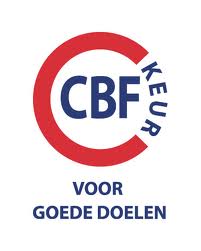acquisition
Face: The Future
The Outlook for Face-to-Face Fundraising
It seems a lot of fundraisers’ time is spent thinking about the future: Will we manage to invest our full budget? Will we reach our targets? What to do if the income is not as planned? Will I have a decent budget next year? Five year plans…
Wouldn’t it be great to have a crystal ball that spelled out at least some of what lay ahead and allowed us to focus just a little more on the present moment? Well, for better or worse, that particular technology hasn’t yet materialized but that doesn’t stop us fundraisers from engaging in a little bit of future gazing. Being prepared for different eventualities is important – it allows us to be able to respond quickly and appropriately and to minimize the damage from inevitable bumps along the way – of course it’s an art, not a science, and with this disclaimer in mind I’d like to offer a few forecasts on how I see the face-to-face method of donor recruitment evolving over the next couple of years.
1. Shrinking public space in traditional markets

Many councils and cities ban street fundraising
Open any news source in (for example) the UK or Austria (or many of the most established face-to-face markets) and it won’t be long before you read about a city or council that is implementing (or considering) a complete ban or enforced reduction of face-to-face activities in the public domain. Search Twitter for the words ‘fundraiser’ or ‘chugger’ (a term I consider to be both offensive and ignorant by the way) and you’ll see that the face-to-face topic evokes plenty of debate from the public – and a majority of those moved to tweet tend to have a negative view of the practice and are quite vocal in calling for restrictions. I forecast that authorities in these markets will continue to impose limitations and the amount of public space open to street and door-to-door fundraisers will continue to shrink. (more…)
 Does your nonprofit take advantage of the variety of corporate giving programs that exist? If not, your organization is missing out! In 2010, U.S. corporations gave over $15.5 billion worth of cash and products to nonprofits (Source: Giving USA’s 2011 annual Report on Philanthropy for 2010). Get in on the action by exploring the different programs that are available.
Does your nonprofit take advantage of the variety of corporate giving programs that exist? If not, your organization is missing out! In 2010, U.S. corporations gave over $15.5 billion worth of cash and products to nonprofits (Source: Giving USA’s 2011 annual Report on Philanthropy for 2010). Get in on the action by exploring the different programs that are available.






 For sure, you would be able to answer this if you had participated at the 5th Italian “
For sure, you would be able to answer this if you had participated at the 5th Italian “

 One morning last December I went to outer space and plucked a star. We named her Beatrix.
One morning last December I went to outer space and plucked a star. We named her Beatrix.

 The latest to hit global news has been about ‘
The latest to hit global news has been about ‘





 In Nederland hebben we natuurlijk het CBF, met een lange traditie van controle van fondsenwerving en goede doelen. Een belangrijk criterium daarbij is “dat de kosten voor fondsenwerving van het goede doel, uitgedrukt als een percentage van de inkomsten uit eigen fondsenwerving in enig jaar, niet meer mogen bedragen dan 25% van de inkomsten uit eigen fondsenwerving.” Een prima criterium, waar inmiddels heel Nederland aan gewend is en waar de goede doelen altijd rekening mee houden. Maar waarbij ook een gevaar om de hoek is komen kijken.
In Nederland hebben we natuurlijk het CBF, met een lange traditie van controle van fondsenwerving en goede doelen. Een belangrijk criterium daarbij is “dat de kosten voor fondsenwerving van het goede doel, uitgedrukt als een percentage van de inkomsten uit eigen fondsenwerving in enig jaar, niet meer mogen bedragen dan 25% van de inkomsten uit eigen fondsenwerving.” Een prima criterium, waar inmiddels heel Nederland aan gewend is en waar de goede doelen altijd rekening mee houden. Maar waarbij ook een gevaar om de hoek is komen kijken. 
